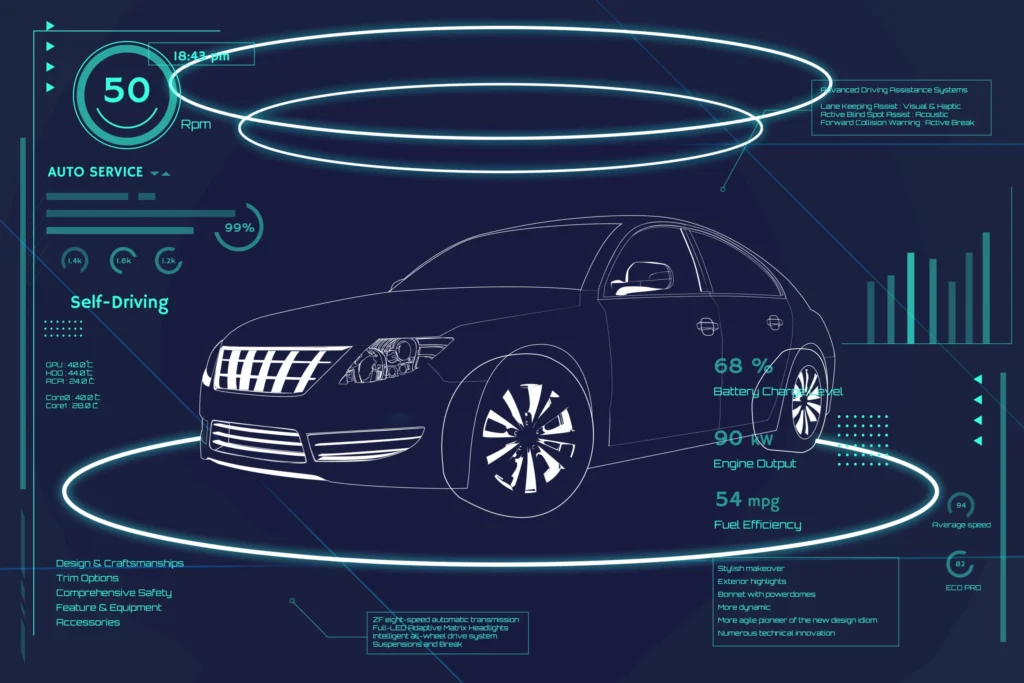Unlocking 7 Amazing Benefits with AI-Powered Demand Forecasting
In today’s fast-paced, data-driven world, precise predictions are the bedrock of successful business operations. Nowhere is this more evident than in supply chain management and production planning, where AI-Powered Demand Forecasting is revolutionizing how organizations anticipate future needs. By leveraging advanced algorithms and vast datasets, AI moves beyond traditional statistical methods, offering unparalleled accuracy and adaptability. This shift empowers businesses to optimize inventory, streamline operations, and make more informed strategic decisions, directly impacting profitability and customer satisfaction.
- What is AI-Powered Demand Forecasting?
- Key Benefits of AI in Demand Forecasting
- How AI Transforms Industrial Engineering
- Challenges and Considerations
- Implementing AI-Powered Solutions
- Future Trends in Demand Forecasting
What is AI-Powered Demand Forecasting?
AI-Powered Demand Forecasting refers to the application of artificial intelligence and machine learning algorithms to predict future customer demand for a product or service. Unlike traditional forecasting methods that rely on historical averages and simple regression, AI models can identify complex patterns, seasonality, trends, and even external factors like economic indicators or social media sentiment that influence demand. This sophisticated analysis leads to significantly more accurate and dynamic predictions.
Key Benefits of AI in Demand Forecasting
The integration of AI into demand forecasting brings a multitude of advantages across various business functions:
Enhanced Accuracy
AI models can process massive amounts of data from diverse sources, including sales history, promotions, competitor activities, weather, and even news events. This comprehensive data analysis enables the detection of subtle correlations and hidden patterns, leading to forecast accuracy that is often unattainable with conventional methods. Higher accuracy reduces stockouts and overstocking.
Real-time Adaptability
Traditional forecasting is often static and requires manual adjustments. AI models, however, can learn and adapt in real-time as new data becomes available. This responsiveness is crucial in volatile markets or during unexpected events, allowing businesses to adjust production and inventory strategies dynamically.
Cost Reduction and Efficiency
By precisely predicting demand, businesses can optimize inventory levels, minimizing carrying costs and reducing waste from obsolete stock. This also improves operational efficiency by allowing for more accurate production scheduling, optimized labor allocation, and reduced expedited shipping costs.
Improved Inventory Management
Accurate forecasts translate directly to better inventory management. Companies can maintain optimal stock levels, ensuring products are available when customers want them without tying up excessive capital in warehouses. This leads to higher service levels and customer satisfaction.
How AI Transforms Industrial Engineering
Industrial engineers are at the forefront of optimizing complex systems, and AI-powered demand forecasting provides them with an invaluable tool. By providing more reliable insights into future demand, AI enables industrial engineers to design more efficient supply chains, streamline manufacturing processes, optimize logistics networks, and make better capacity planning decisions. It shifts their focus from reactive problem-solving to proactive strategic planning, ensuring resources are allocated effectively and bottlenecks are anticipated and mitigated. For more insights on this synergy, explore our article on Industrial Optimization Strategies.
Challenges and Considerations
While the benefits are clear, implementing AI-powered demand forecasting is not without its challenges. Data quality is paramount; ‘garbage in, garbage out’ applies strongly here. Organizations must invest in data collection, cleansing, and integration. Model complexity and the need for skilled data scientists can also be barriers. Finally, integrating AI solutions with existing ERP and supply chain management systems requires careful planning and execution.
Implementing AI-Powered Solutions
Successfully integrating AI into your forecasting strategy involves several key steps: defining clear objectives, gathering and preparing robust datasets, selecting appropriate AI/ML models, training and validating these models, and finally, deploying and continuously monitoring their performance. Companies often start with pilot projects to demonstrate value before scaling.
Here’s a comparison of traditional vs. AI-powered forecasting methods:
| Feature | Traditional Forecasting | AI-Powered Demand Forecasting |
|---|---|---|
| Data Sources | Limited historical sales | Vast, diverse, real-time |
| Analysis Method | Statistical models (e.g., ARIMA) | Machine learning, deep learning |
| Accuracy | Moderate, often lags trends | High, adaptive, predictive |
| Adaptability | Low, manual adjustments | High, learns in real-time |
| Complexity | Lower | Higher initial setup |
| Insights | Basic trends | Deep, actionable patterns |
Future Trends in Demand Forecasting
The future of demand forecasting is undeniably AI-driven. We can expect even more sophisticated models, integrating hyper-local data, IoT sensor information, and advanced natural language processing for sentiment analysis from social media. The focus will shift towards prescriptive analytics, where AI not only predicts but also recommends optimal actions. Edge computing will also play a role, enabling faster, localized predictions. To keep up with these advancements, continuous learning and adaptation are essential for businesses aiming to stay competitive. Further reading on this topic can be found at Forbes Innovation.
Conclusion
AI-Powered Demand Forecasting is no longer a futuristic concept but a vital necessity for businesses aiming to thrive in an unpredictable market. Its ability to provide accurate, real-time insights revolutionizes inventory management, optimizes supply chains, and ultimately drives greater profitability and customer satisfaction. By embracing this technology, companies can transform their operational efficiency and secure a competitive edge, ensuring they are always one step ahead in meeting the demands of tomorrow.


